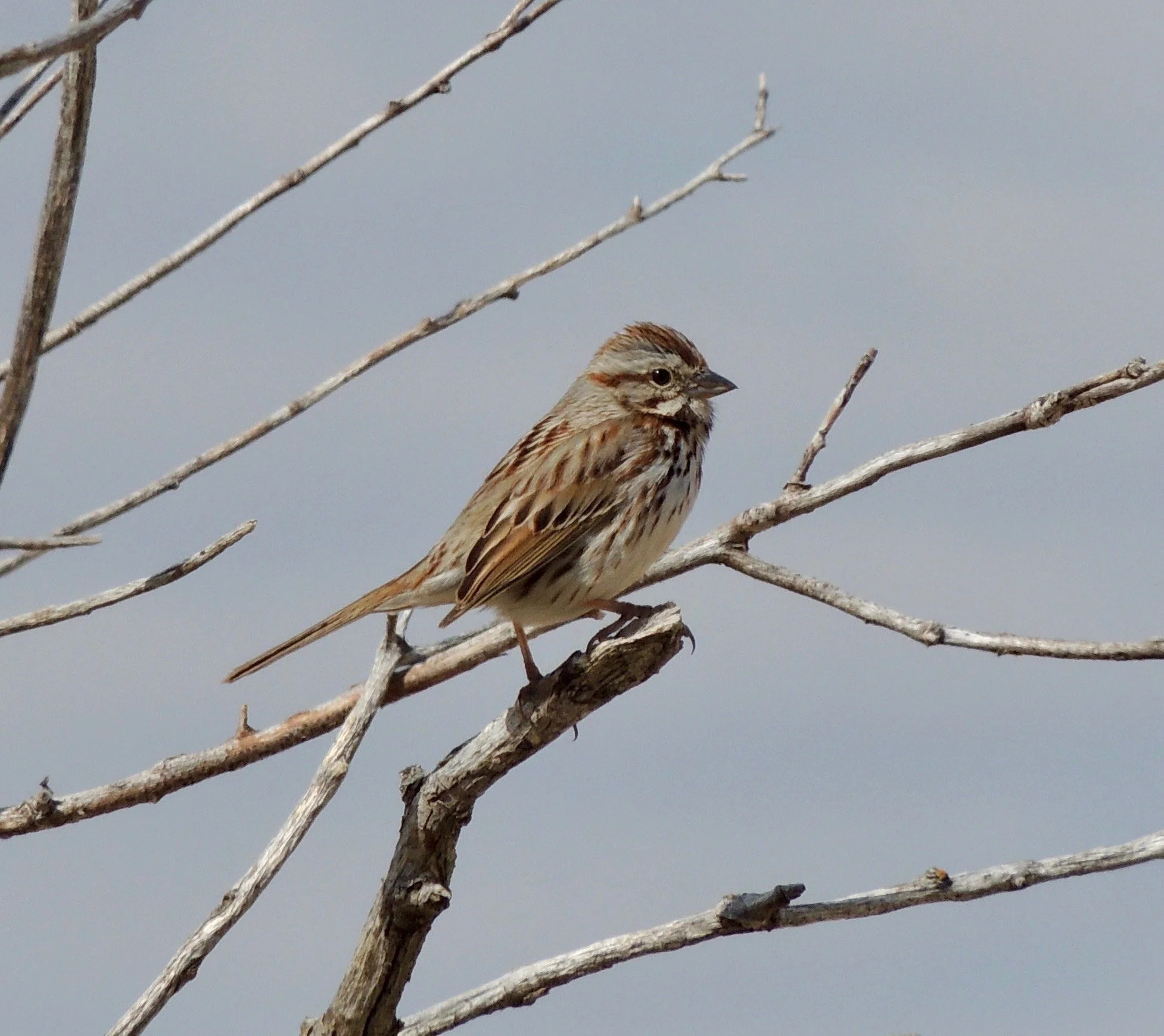Into the Woods with Curio: Song Sparrow Spring
Doug Smith
“There is one body and one Spirit, just as you were called to one hope when you were called; one Lord, one faith, one baptism; one God and Father of all, who is over all and through all and in all.” Ephesians 4:4-6
One of the first birds to start singing at camp in the springtime is the song sparrow. Aptly named, this accomplished songster owns a somewhat complicated melody, starting with 2 to 4 short notes, then a trill, followed by several loud double notes at the end. Though only a few seconds long the sweet song is repeated over and over throughout the day, as soon as the bird arrives in early April. A medium-sized, rusty-brown and gray sparrow, it prefers the bushy habitat along the waterfront, from which it proclaims its territory, and serenades a mate. After a brief courtship, the couple starts house searching, choosing a concealed spot in a tussock of grass, or a small bush close to the ground. By May there is a nest with 3 to 6 eggs, and by June the young are leaving the nest. They are still fed by their parents, especially Dad, as Mom gets busy with a second brood. The male continues to sing for most of the summer, when he is not too busy with the family. Though song sparrows don’t overwinter in Muskoka, they often linger into the fall, and can still be heard singing occasionally. These are the young males, practising their songs.
Camp is not the only place where you can hear song sparrows. Once you are familiar with their song, and distinctive ‘chimp’ call note, you may find them where you live in southern Ontario, and elsewhere. The song sparrow is one of the most widespread of the native North American sparrows; (note – don’t confuse it with the house sparrow, which is also common, but is an introduced species, not related to our native sparrows. And house sparrows can’t sing).
Song sparrows are found from Alaska to Baja California, and from Florida all around the east coast and up to the treeline in northern Quebec. If you happen to hear and see them in your travels you’ll discover they may look and sound slightly different. The song sparrows in Alaska and the Aleutian islands are much darker. This darker plumage may be a defense against feather parasites that thrive in humid climates. By contrast, the song sparrows that inhabit Arizona and the southwest are very light coloured, an adaptation to their local environment. There are over 20 recognized subspecies of song sparrow found throughout the continent. These subspecies also show some noticeable variations in their songs, with some having longer intros, or longer trills, or a variation of some kind. But they are all still song sparrows, regardless.
Believers in the Lord Jesus show many variations in how we look and talk, even having different languages, depending on where we are from. But if we have accepted the Lord Jesus as our Saviour we are all God’s children, and part of His family.
